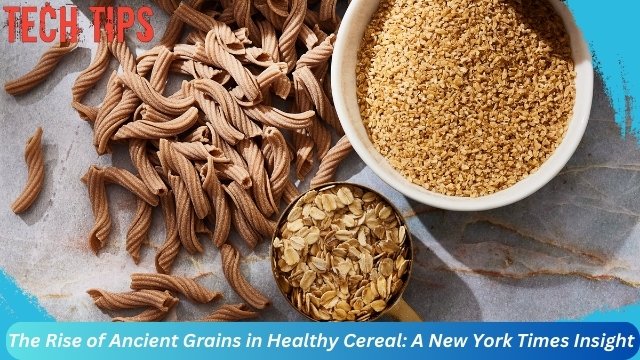
ancient grain in a healthy cereal
In recent years, the arena of vitamins has visible a revival of historic grains, especially in the realm of healthy cereals. The New York Times has often highlighted this fashion, emphasizing how these grains, as soon as staples in historical diets, at the moment are being rediscovered and celebrated for their nutritional advantages. This article explores the resurgence of Ancient Grains in Healthy Cereal in breakfast cereals, their fitness advantages, and why they’ve grown to be a staple in contemporary diets.
What Are Ancient Grains?
Ancient grains are a set of grains and seeds that have remained in large part unchanged during the last several hundred years. Some of the maximum famous historic grains include quinoa, amaranth, spelt, millet, and farro.
These grains were staples in the diets of historical civilizations, respected for his or her resilience, dietary density, and versatility. The New York Times has talked about how the return to those grains represents a shift towards more sustainable and fitness-conscious ingesting behavior.
Health Benefits of Ancient Grains in Cereal
Ancient grains are packed with vitamins, making them a great desire for health-aware purchasers. The New York Times has frequently highlighted the subsequent blessings:
- High Nutritional Value: Ancient grains are rich in vital vitamins which include fiber, protein, nutrients, and minerals. For instance, quinoa is a complete protein, meaning it consists of all 9 crucial amino acids, making it a specifically treasured addition to a plant-based totally weight loss plan.
- Rich in Fiber: Many ancient grains, like barley and millet, are first-rate sources of dietary fiber, which aids in digestion and helps maintain a wholesome weight. Fiber also performs a vital function in heart health with the aid of lowering levels of cholesterol.
- Low Glycemic Index: Ancient grains often have a decreased glycemic index as compared to processed cereals. This approach motivates a slower, greater gradual upward push in blood sugar stages, making them a higher alternative for preserving regular electricity at some stage in the day.
- Antioxidants and Phytonutrients: Ancient grains also are wealthy in antioxidants and phytonutrients, which help protect the frame in opposition to irritation and ailment. The presence of those compounds in cereals can contribute to general well-being.
Ancient Grains in Modern Breakfast Cereals
The New York Times has reported on how ancient grains are remodeling the breakfast cereal aisle. Major cereal brands and boutique manufacturers alike are incorporating those grains into their products, providing customers with a healthier and extra nutritious start to their day. Cereals made with historic grains regularly function as a mix of several grains, combining the benefits of each..
Sustainability and the Appeal of Ancient Grains
The New York Times has also stated the sustainability thing of historic grains. Many of these grains require much less water and fewer resources to grow compared to fashionable wheat, making them a greater environmentally friendly desire. As purchasers become extra eco-conscious, the call for sustainable meal options, together with Ancient Grains in Healthy Cereal, continues to rise.
The Future of Ancient Grains in the Cereal Industry
The New York Times predicts that we can see increasingly merchandise that functions these grains, catering to the evolving tastes and values of clients. Ancient Grains in Healthy Cereal are probable to innovate further, developing cereals that not best flavor remarkable but additionally deliver advanced dietary blessings. Whether you’re seeking out a gluten-free option, an excessive-fiber breakfast, or need to enjoy the flavor of historical grains, there’s no question that these cereals will preserve a sizeable position inside the marketplace.
Conclusion
The resurgence of Ancient Grains in Healthy Cereal in wholesome cereals, as highlighted by using The New York Times, is more than only a fashion it’s a go back to nutrient-dense, sustainable consumption. These grains provide a wealth of fitness advantages, from excessive fiber content material to important nutrients, and their integration into modern cereals presents a nutritious start to the day. As consumers turn out to be increasingly fitness-aware and eco-friendly, historical grains are poised to stay a staple in the breakfast aisle for years yet to come.








